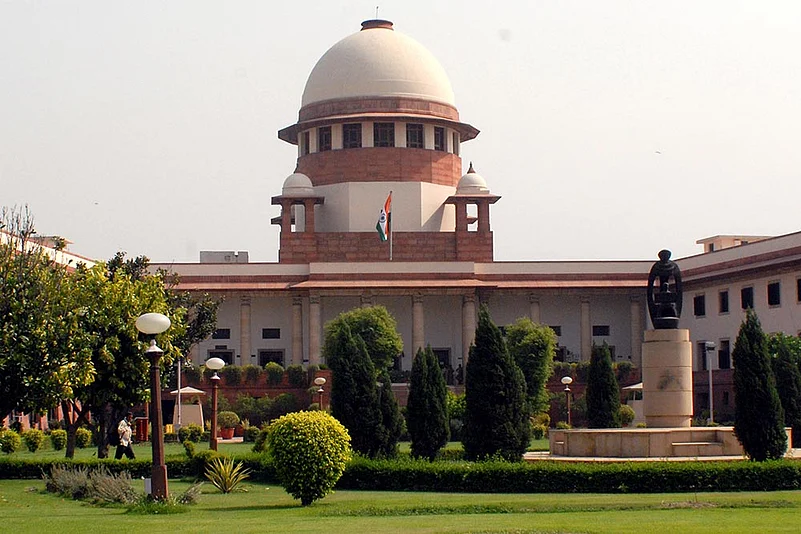The Supreme Court of India is in the news every day. Yet we know very little about the judges themselves. The views of Supreme Court lawyers’ are coloured and the judges themselves are reticent. Their memoirs are boring. We have no investigative accounts like Brethren for the American Supreme Court. George Gadbois was one scholar who published his interviews and research for all judges between 1950 to 1980, leaving it to his protege Abhinav to use his notes and his own intuitions to complete the story till 1989. Gadbois, who was a dear friend whom I visited in Kentucky months before he died, was not the greatest of scholars from abroad or otherwise on Indian law. But he knew that his research on judges was unique, even if at times forbearing. Abhinav uses that gold mine, adds to it and, in many ways, surpasses the work of his acknowledged mentor by dealing with things schematically and not as a commentary on each judge.
Abhinav does not just update Gadbois for the period between 1980-1989, covering each judge separately as Gadbois did, but adds insights into his own by examining the innumerable rivalries between famous chief justices and other judges, including that of his grandfather, former chief justice Y.V. Chandrachud, with former chief justice P.N. Bhagwati. But because he relied on interviews, he sometimes fails to get the full picture. Bhagwati’s appointment was trumped at the last moment by fellow Maharashtrian Gokhale in favour of Chandrachud. At the same time, criticism of Chandrachud was unjustified, because he allowed Bhagwati free reign over PIL cases, which became the latter’s foray. There are bound to be rivalries among top judges, especially as appointments are made to deny seniority or chief justiceship of one over the other. True, in the 1970s, supporting the ideology of Mrs. Gandhi’s ‘socialist’ state was important. Post Emergency, many, except a few judges, sported themselves as ‘activists’. Many chief justices (like Chandrachud) accepted government appointments, except in the case of M.N. Shukla, who was allegedly accused of sexual assault. In 1956, P. Govinda Menon was clearly a Krishna Menon protege. But what we are missing is the whole picture in two senses. First, the role of government does not come out clear or clean. More research was needed on that beyond Abhinav and Gadbois’s remit. Second, given the limited insight into judges’ behaviour inter se, we get very little on how the judges fared as judges. For some of us, Gajendragadkar, who supposedly was a pro-labour judge, jettisoned the trade union movement and paraded Nehruvian secularism. Krishna Iyer quintessentially changed the judiciary. Bhagwati—except for some lapses—was juristically amongst the most capable. For that verdict we have to go through judgments, their inner architecture, purpose and effect. That too is really beyond this engaging introduction to the judges themselves.
Unfortunately, the Gadbois–Abhinav story ends in 1989, as we transit to the ‘pendulum years’. It needs another Gadbois to take us through these years. Maybe one of his chelas will. We are in the midst of a massive ongoing fight between the government and the Supreme Court over judicial appointments, resulting in unimaginable face-offs. After the abortive impeachments of Justice Shah in 1990, we finally saw failed impeachments of Ramaswami in the 1990s in Parliament and of Misra in 2018, which was blocked by the deputy chairman. George Gadbois believed in some complaint mechanism on judicial behaviour, giving me materials on it. This is a must. These are far from exciting times. The judges went into rebellion in 2017-18 and the government is hell-bent on resisting the Supreme Court’s nomination of K.M. Mathew, whose Uttarakhand judgment striking down the imposition of president’s rule is not liked by the BJP. Mathew’s independence till 2022 is unacceptable to this government.
In comparison, the Supreme Court in 1950-1989, covered by this book, was easier to comprehend as celebrations of the rule of law and the social justice role of the Supreme Court. Post 1990, we are in the throes of an unpredictable Supreme Court, but greedy to hold on to its ad hoc ‘activism’. The court has risen in the eyes of the public despite the weaknesses and vanity of so many judges who should never have been appointed. It is crucial to Indian democracy.
We need another Gadbois-Abhinav initiative to get a fuller picture. We need to know more about judges before and after their appointments, as also about the Supreme Court itself. New scholars, like Abhinav, have a far more daunting task than we did.
















